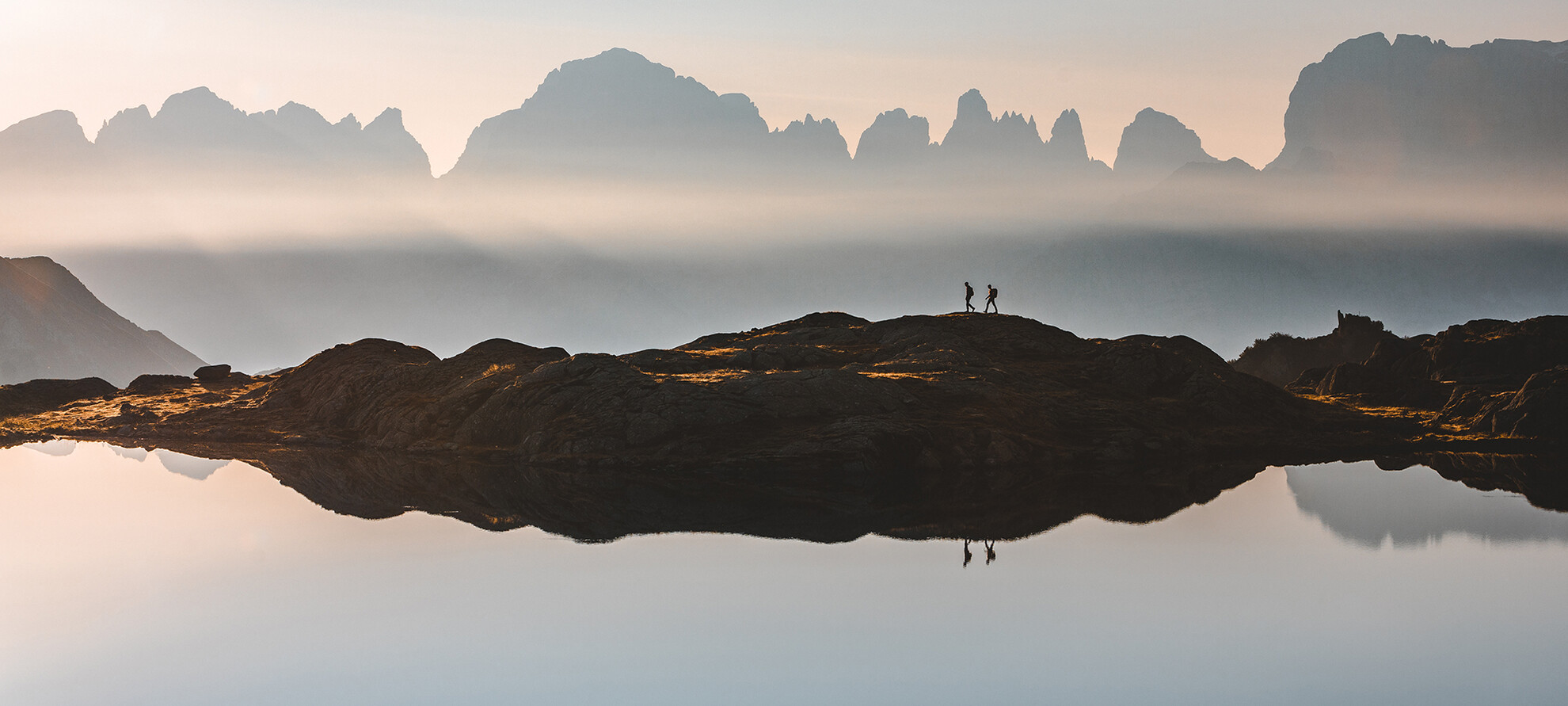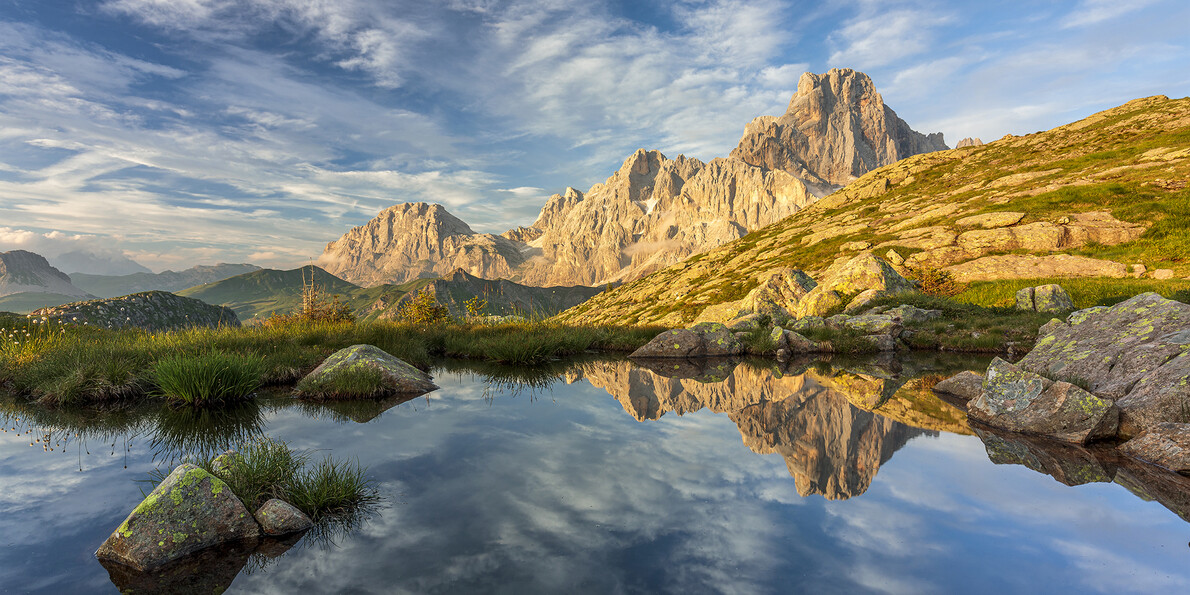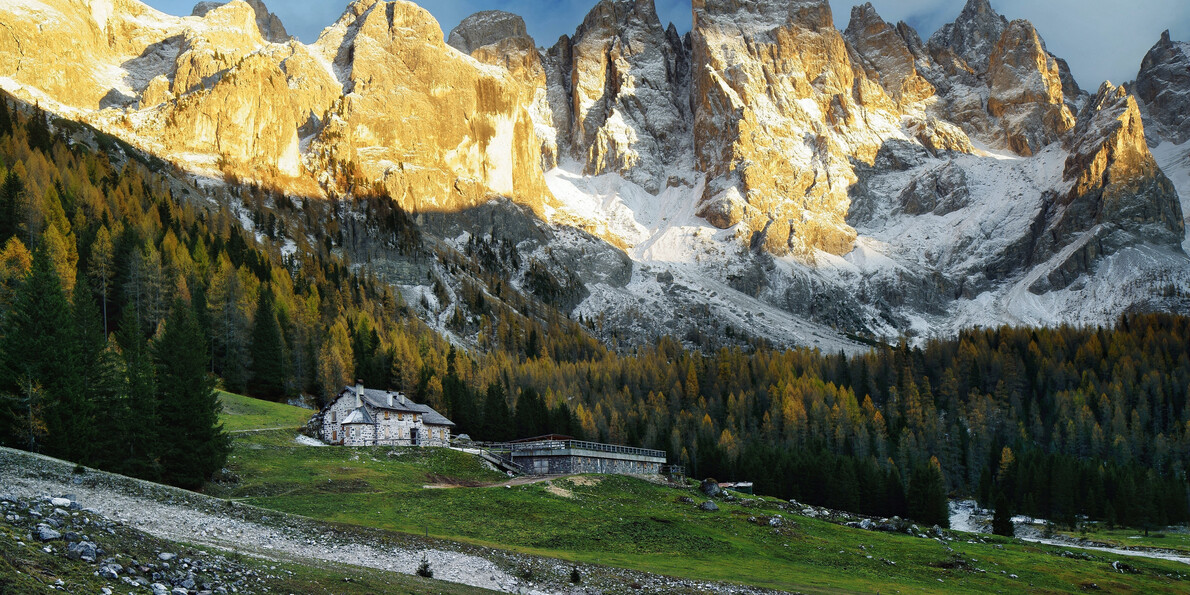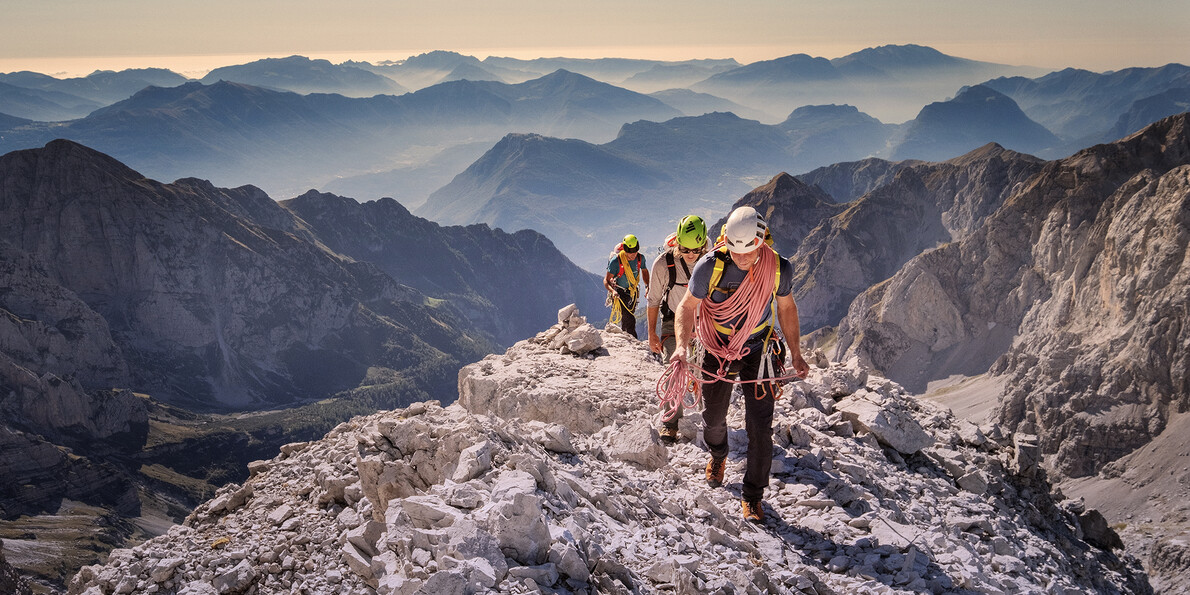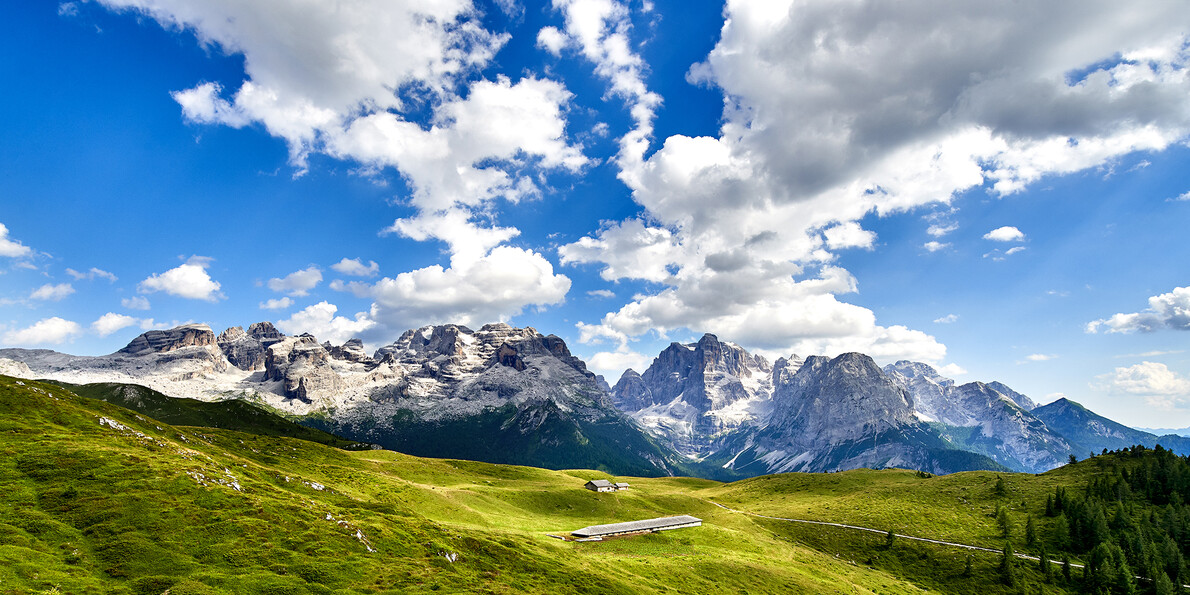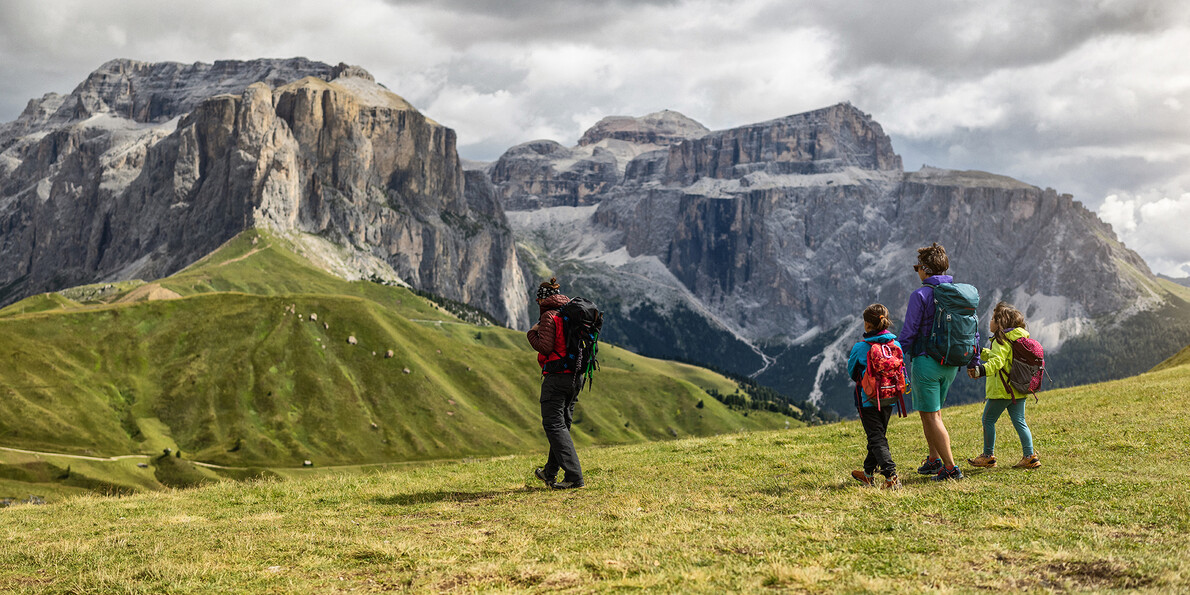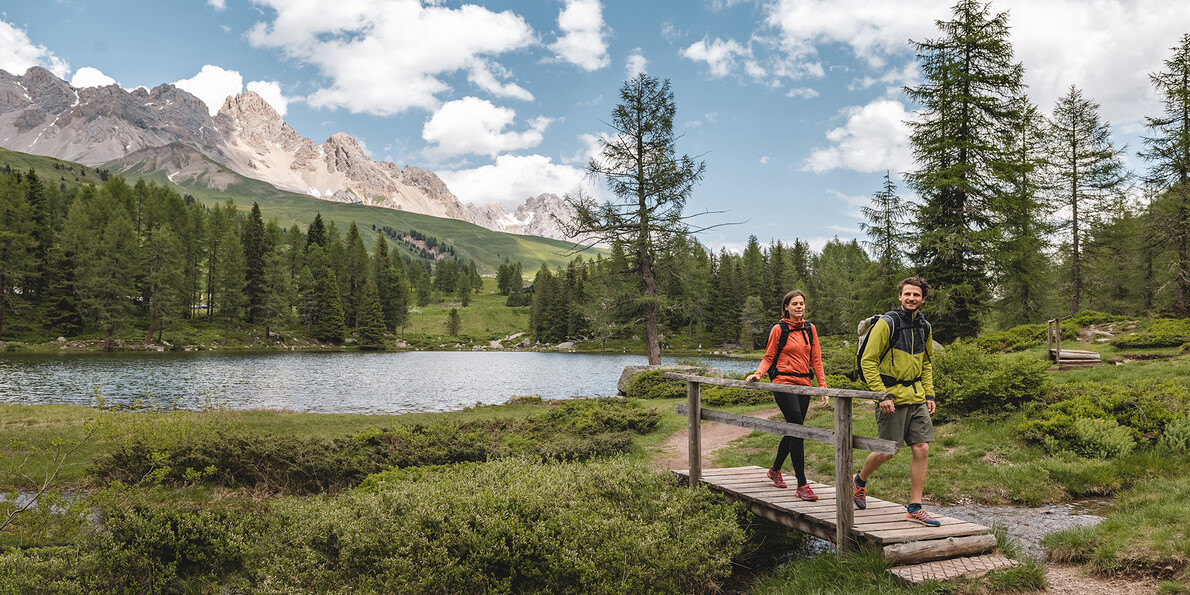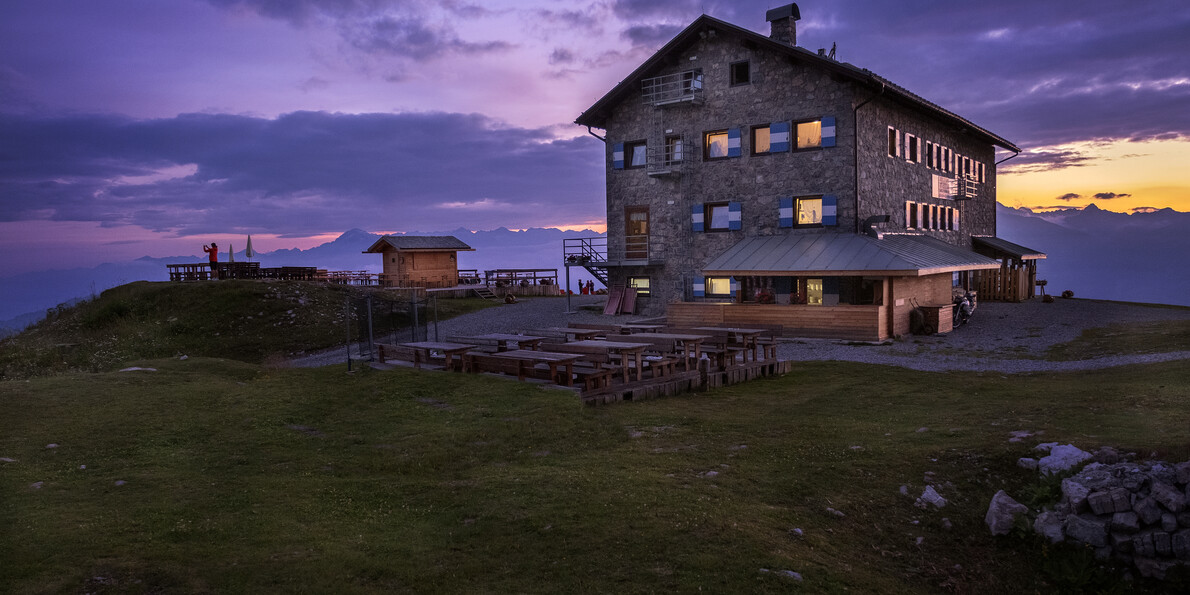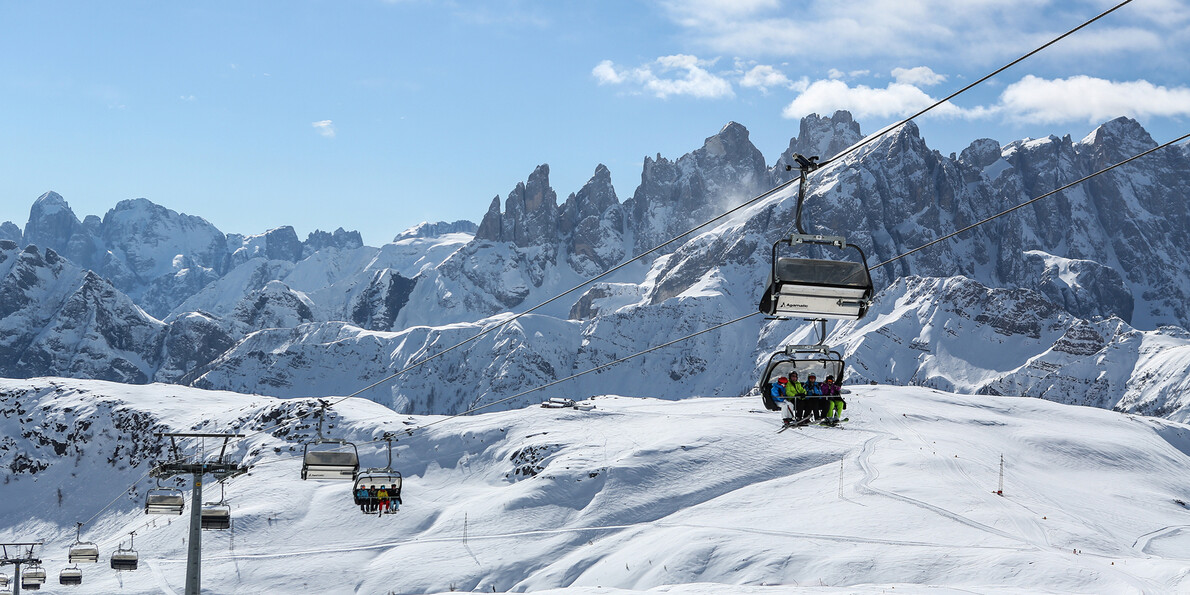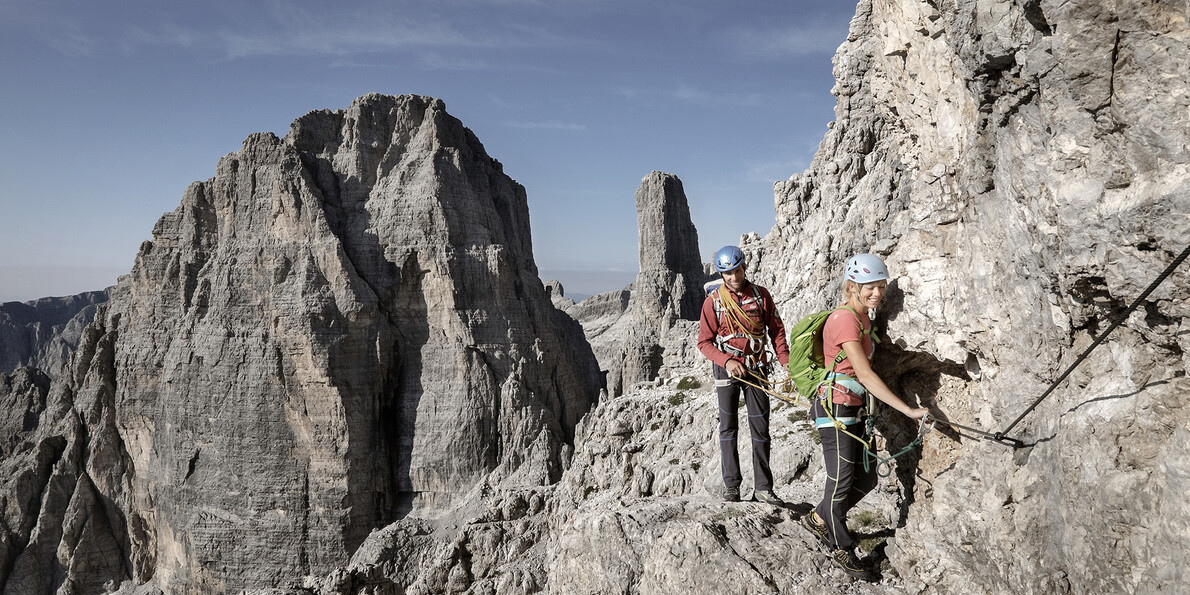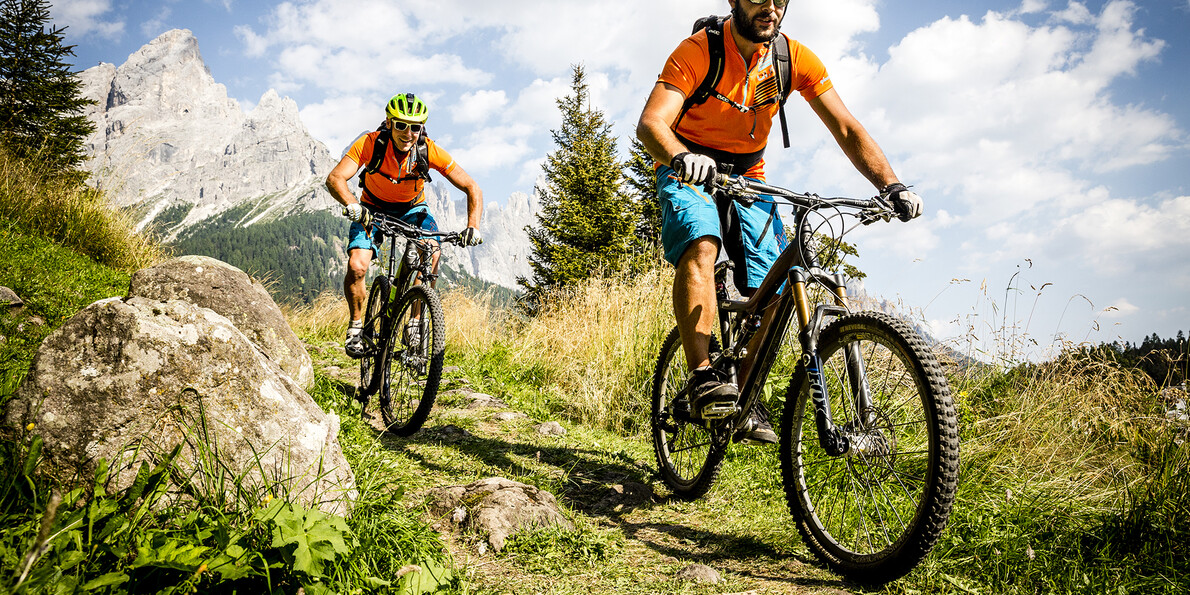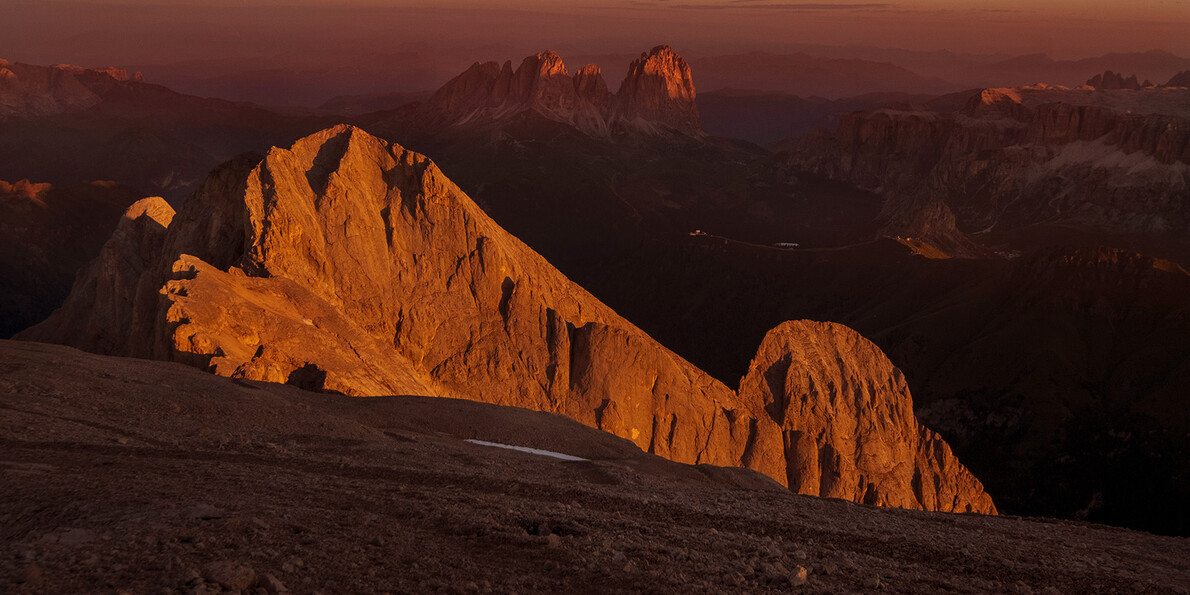10 questions and answers on the Dolomites
All you need to know on these mountains, which are a World Heritage Site
What are the Dolomites? Where can you see them? What is the enrosadira? Ten questions and ten answers to know everything about these stunning mountains, a masterpiece of nature!
#1 - What are the Dolomites?
The Dolomites are a mountain range lying in the eastern section of the northern Italian Alps. What makes these mountains so special is the fact that they are essentially composed of dolomite rock.
This gives the Dolomites their pale colour, making them so fascinating and mysterious, but also causing enrosadira (alpenglow). We’ll tell you what this is in question number ten!
#2 - Where are they?
Simplifying it to the extreme: the Dolomites lie in northeastern Italy, specifically in the provinces of Trento, Bolzano, Belluno, Verona, Vicenza, Udine and Pordenone.
#3 - Why are they considered a World Heritage Site?
In Seville, on 26 June, 2009, the World Heritage Committee inscribed the Dolomites in the World Heritage List, citing the beauty of their unique landscape and geological features.
From a geological point of view, their specific composition, studied by the French geologist Déodat de Dolomieu, makes these mountains unique worldwide. While to understand their uniqueness in landscape terms, you have to just look at them: sheer rock walls, glaciers, spires, towers and pinnacles create inimitable landscape vistas.
#4 - Where can I see them in Trentino?
There are basically four main Dolomite groups in Trentino. The Latemar and Catinaccio groups in northeastern Trentino, between Val di Fassa and Val di Fiemme; the Marmolada massif with its glacier, in Val di Fassa; the Pale di San Martino mountain range, always in the east, but in a more southerly direction, in the area of the Parco Naturale Paneveggio Pale di San Martino (nature park) and the Dolomiti di Brenta, the only mountain group lying west of the river Adige, which is entirely in Trentino, in the heart of the Parco Naturale Adamello Brenta (nature park).
#5 - How do I reach them?
You can reach the Trentino Dolomites in many ways and we will recommend a few of them:
- The Gruppo del Latemar: this can be easily reached on foot by following several paths that start from Pampeago, just above Tesero in Val di Fiemme or with ski lifts, from Predazzo up to Rifugio Passo Feudo (2175m). This is the start point for the hike to (Rifugio) Torre di Pisa, considered to be the gateway to the Latemar.
- While the Catinaccio can be reached directly from the centre of Vigo di Fassa (San Giovanni di Fassa) thanks to a modern cable car that in just a few minutes takes you to Belvedere del Ciampedìe at 2.000 m a.s.l. The rifugio (mountain hut) having the same name is one of the starting points for hikes in the Catinaccio - Rosengarten area. The chair lifts from Pera are also a good solution. From this hamlet in the municipality of San Giovanni di Fassa you can also take the Vajolet 1 and Vajolet 2 ski lifts to quickly reach Pian Pecei. From there, you can walk to Gardeccia (about 20 min). Otherwise, there is a third ski lift that also takes you to Ciampedìe from Pian Pecei.
- Marmolada: You can leave from Canazei and continue up to Passo Fedaia, where, once you reach the pass (2.057 m a.s.l.), you will see the mountain reflected in the waters of artificial Lake Fedaia.
- Pale di San Martino: You can enter the Val Venegia, or you can walk along the Val Canali, which can be reached in a short time from Fiera di Primiero. While near the centre of San Martino di Castrozza, you can take the Cabinovia Colverde (cable car) that takes you to the foot of the Pale di San Martino and to the mountain hut having the same name; or you can choose the Funivia Rosetta (cableway) that takes you to the Altopiano delle Pale, the start point of many hikes. From there, you can reach Rifugio Pedrotti alla Rosetta.
- Dolomiti di Brenta: There are 4 main entry points.
- From Val Rendena you can reach places that are near Madonna di Campiglio with ski lifts that take you to Grostè or to the foot of Vallesinella.
- In the Valli Giudicarie (Giudicarie Valleys) the recommended access points are from the Val d’Ambiez, above San Lorenzo in Banale, which takes you to Rifugio Agostini, and from Val d’Algone you can reach Rifugio Dodici Apostoli, one of the most isolated, scenic places in the Brenta Mountain Group, with a spectacular view over the Adamello and Presanella mountain ranges.
- From Val di Non, we recommend you reach the Brenta Mountain Group from Rifugio Peller above Cles or by entering Val di Tovel.
- More expert hikers can approach the mountain group on foot, but also with ski lifts, from the Altopiano del Pradel (plateau), just above Molveno in Paganella, until they reach Rifugio Tommaso Pedrotti (mountain hut).
#6 - Is it cold in the Dolomites?
Usually yes, given that the Dolomites generally lie at an altitude above 1.500 metres (but you can easily reach altitudes of more than over 2.000 metres with cable cars).
In winter, there are heavy snowfalls, which make the area perfect for skiers, while in summer it is rather cool, so it is ideal for hikers, climbers and cyclists.
#7 - What is the most suitable clothing to wear?
It is important to wear the right clothing. You are going to the mountains, therefore it is essential that you wear and use suitable clothes and equipment. In winter, it is compulsory to have snow-boots, a waterproof anorak and clothing, as well as a beret, gloves, snood and, if there is lots of snow, a pair of snowshoes to move around with. If you are going to ski in the Dolomites, you can take your own equipment with you or you can rent it in the many specialised shops.
In summer, even if it is hot, we would recommend you wear long technical trousers, trekking shoes, a technical T-shirt and a cap to protect you from the sun because, as you climb up the mountains, the vegetation becomes sparser and offers less shelter. Always take a long-sleeved sweater with you, just to be on the safe side, and a wind- and rain-proof jacket, especially in spring and autumn. In all seasons, don’t forget to take a backpack, some water and high protection sun cream as the sun is very strong at high altitudes.
#8 - Can I sleep in the Dolomites?
Yes, of course you can. There are many facilities that offer hospitality to tourists visiting the Dolomites, such as rifugi (mountain huts). These facilities are situated high up in the mountains and are organised in such a way as to accommodate mountain climbers and hikers. Obviously, they don’t have all the facilities of a traditional hotel, but there is no comparison to waking up in the heart of the Dolomites! The huts are usually open from 20 June to 20 September, but these dates can change according to the weather conditions. Some advice: if you decide to sleep in a mountain hut, take a sleeping bag or a sleeping bag liner with you, as in the CAI-run huts it is obligatory to have them!
The more daring (and more expert) hikers can try sleeping in a bivouac hut. These small, unmanned structures with bare essentials are situated at high altitudes to offer shelter to mountain climbers. You do not pay to sleep in them, but you may have to share the space with other mountain climbers who, like you, have stopped there for the night.
#9 - What can you do in the Dolomites?
Countless things: it depends on the season.
Obviously, many people go to the Dolomites to ski. The slopes are very well-equipped and the vistas make them one of the most popular destinations for skiers from all over the world. Just think of places like Madonna di Campiglio, Canazei or San Martino di Castrozza, which are known by all snow lovers.
While in summer, the Dolomites offer hundreds of hiking paths, for beginner and expert hikers. The paths often reach malghe (mountain dairies) and rifugi (mountain huts), where you can stop and eat something, while the mountain lifts (open until late summer) allow hikers to reach high altitudes, avoiding the hardest stretches of ascents. Besides trekking enthusiasts, in summer the Dolomites are a reference point for climbers, trail runners and vie ferrrate lovers. The Bocchette Via Ferrata, in the Brenta Dolomites, is a must for those who love the mountains... and do not suffer from vertigo.
Many cyclists also choose the Dolomites in summer. While mountain bike lovers can unleash their passion in one of the many high-altitude bike parks, those who prefer road cycling can tackle the Dolomite ascents that have made cycling history.
#10 - What is enrosadira (alpenglow)?
Here is the answer to the question we didn’t answer at the beginning of our Q&As. Enrosadira (alpenglow) is the phenomenon whereby the Dolomite peaks, bathed by light at dawn or sunset, take on a red colour. This is visible throughout the year, but it becomes spectacular in summer, when sunset lasts longer.
Narrating enrosadira (alpenglow) is not the same as seeing it in person. It is truly magical, so much so that over the centuries many legends have been passed down to explain this phenomenon. The protagonist of the most well-known legends is King Laurin, the king of dwarves, who covered these mountains with roses to court Similde, the beautiful princess.
